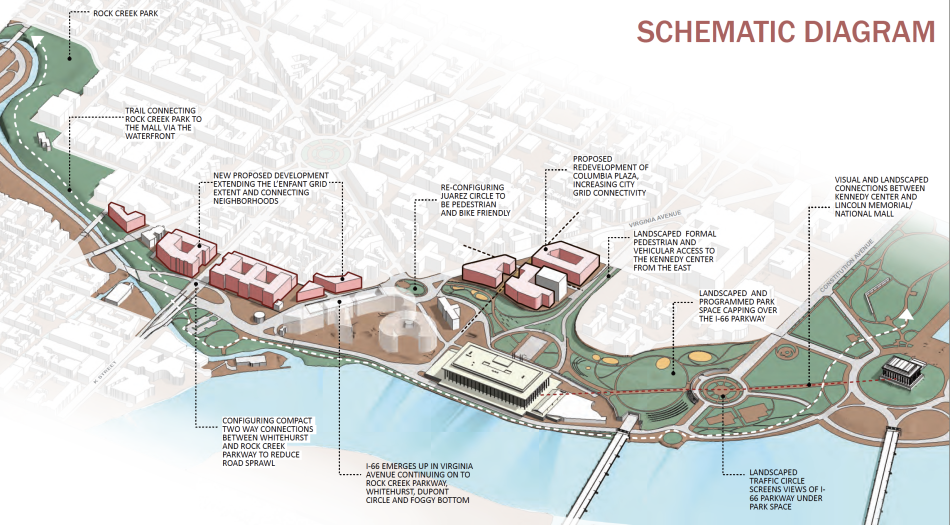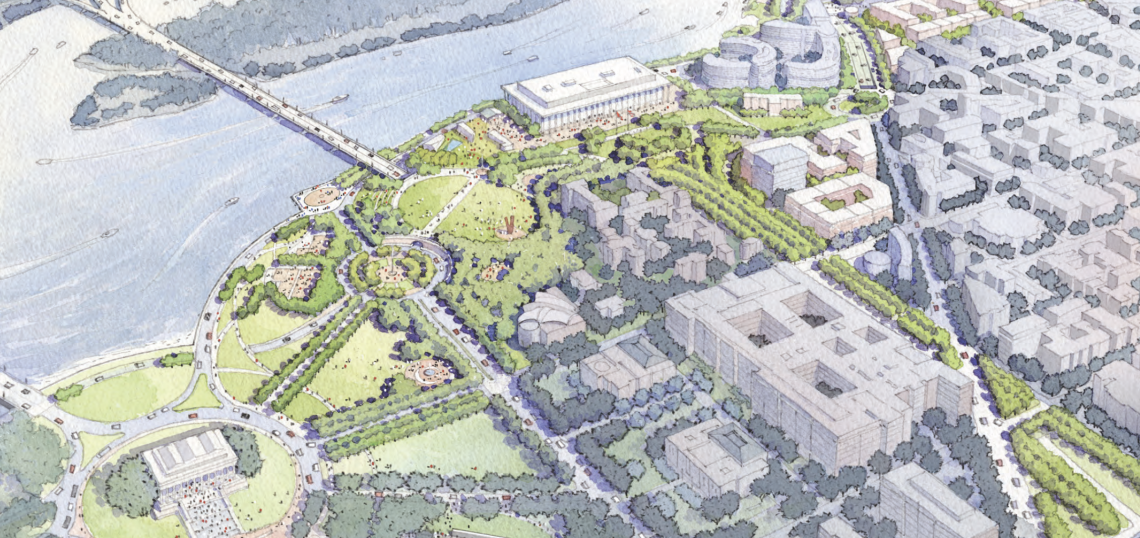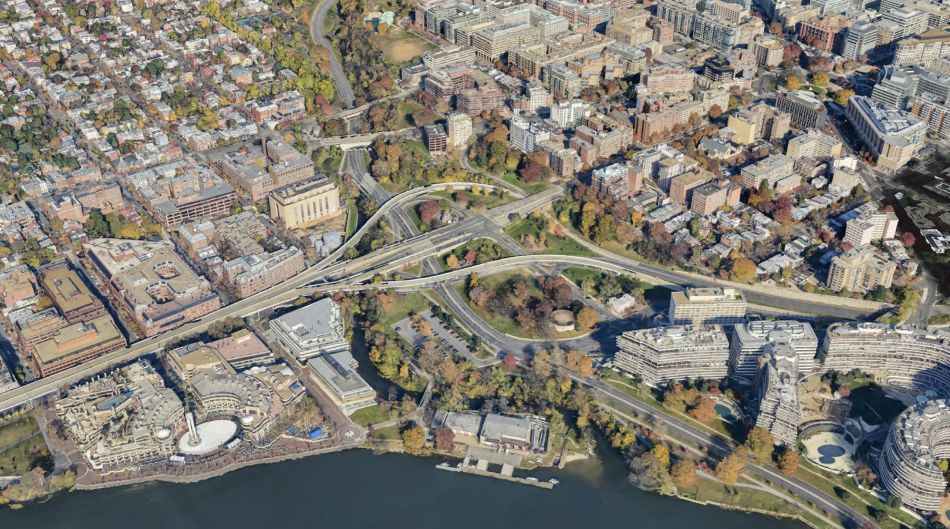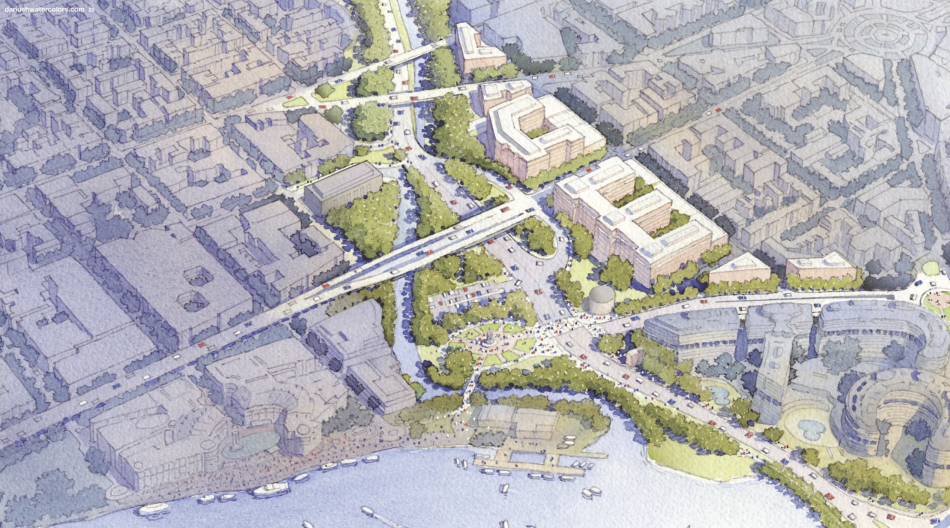What if the highways separating the John F. Kennedy Center for Performing Arts from the National Mall were replaced by lush green space? That is the goal of the National Capital Planning Commission (NCPC), which showcased their early concept for repairing and connecting the National Mall by moving roads underground.
 Moving major roads underground could create green space and new development parcelsNational Capital Planning Commission
Moving major roads underground could create green space and new development parcelsNational Capital Planning Commission
Since the 1960’s, when I-66 was extended, the Kennedy Center, National Mall, and many waterfront neighborhoods were severed from one another. Car-centric design limits public accessibility and activity around the Potomac waterfront and Kennedy Center.
To solve this issue, the NCPC hopes to increase connectivity for pedestrians, cyclists, and vehicles between Rock Creek Park and the National Mall, expand usable public park space, and identify infill development locations. This would be accomplished by moving major roads underground, and creating new pedestrian and bike paths across a 27-acre park.
 The Kennedy Center could become an extension of the National MallNational Capital Planning Commission
The Kennedy Center could become an extension of the National MallNational Capital Planning Commission
Features of the new space include a new National Desert Storm and Desert Shield Memorial, a monumental sculpture in front of the Kennedy Center, and various new connections between Rock Creek and Georgetown Riverfront.
In addition to enhanced pedestrian mobility, the proposal projects generating tax revenues through the development of newly unlocked parcels. Their estimates show the new development could generate $16-$21M in tax revenues per year, depending on density.
The designs were provided by MKSK, Perkins Eastman, and GS. There are currently no timelines or cost estimates for the project.








